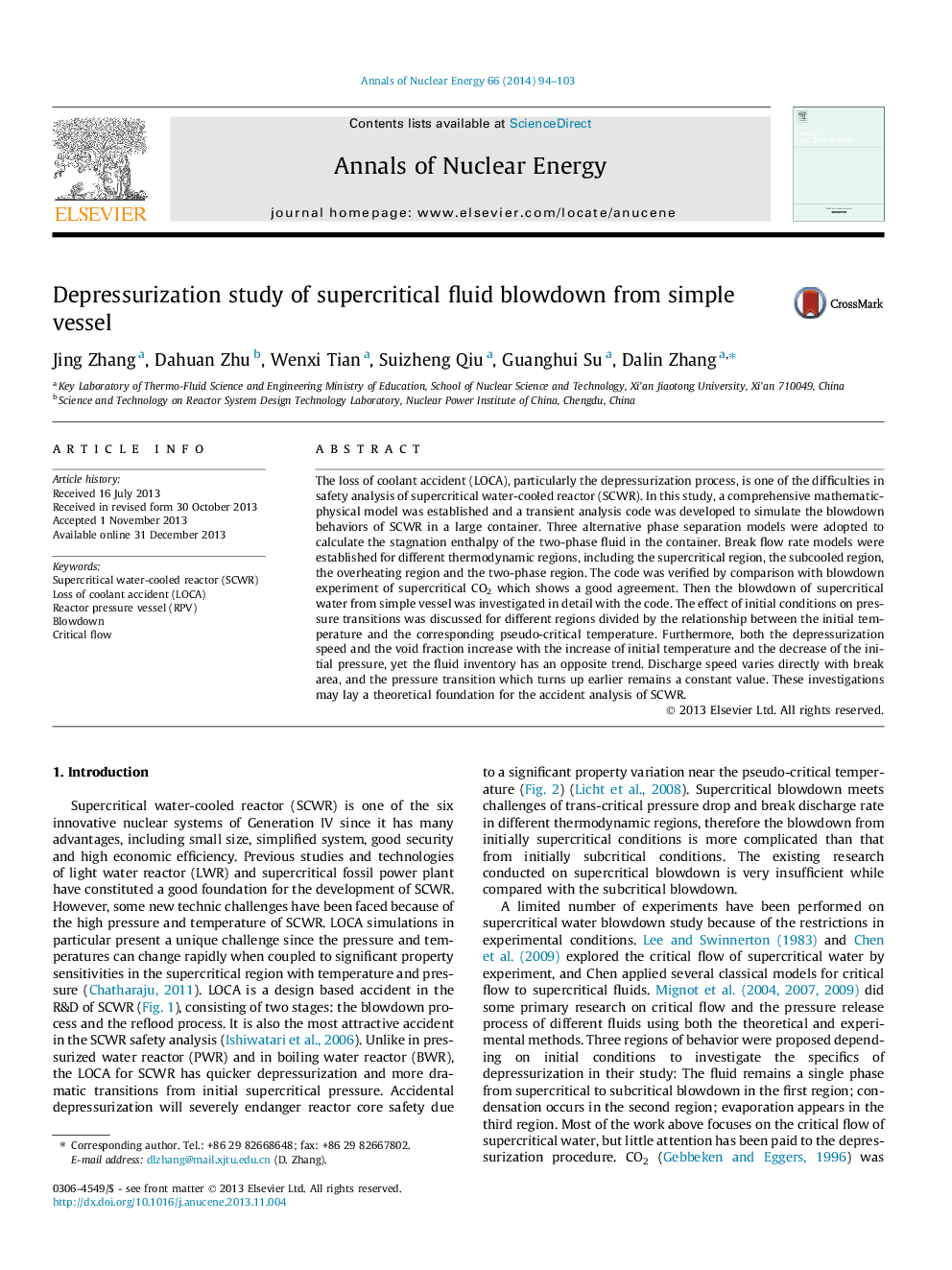| Article ID | Journal | Published Year | Pages | File Type |
|---|---|---|---|---|
| 8069342 | Annals of Nuclear Energy | 2014 | 10 Pages |
Abstract
The loss of coolant accident (LOCA), particularly the depressurization process, is one of the difficulties in safety analysis of supercritical water-cooled reactor (SCWR). In this study, a comprehensive mathematic-physical model was established and a transient analysis code was developed to simulate the blowdown behaviors of SCWR in a large container. Three alternative phase separation models were adopted to calculate the stagnation enthalpy of the two-phase fluid in the container. Break flow rate models were established for different thermodynamic regions, including the supercritical region, the subcooled region, the overheating region and the two-phase region. The code was verified by comparison with blowdown experiment of supercritical CO2 which shows a good agreement. Then the blowdown of supercritical water from simple vessel was investigated in detail with the code. The effect of initial conditions on pressure transitions was discussed for different regions divided by the relationship between the initial temperature and the corresponding pseudo-critical temperature. Furthermore, both the depressurization speed and the void fraction increase with the increase of initial temperature and the decrease of the initial pressure, yet the fluid inventory has an opposite trend. Discharge speed varies directly with break area, and the pressure transition which turns up earlier remains a constant value. These investigations may lay a theoretical foundation for the accident analysis of SCWR.
Related Topics
Physical Sciences and Engineering
Energy
Energy Engineering and Power Technology
Authors
Jing Zhang, Dahuan Zhu, Wenxi Tian, Suizheng Qiu, Guanghui Su, Dalin Zhang,
